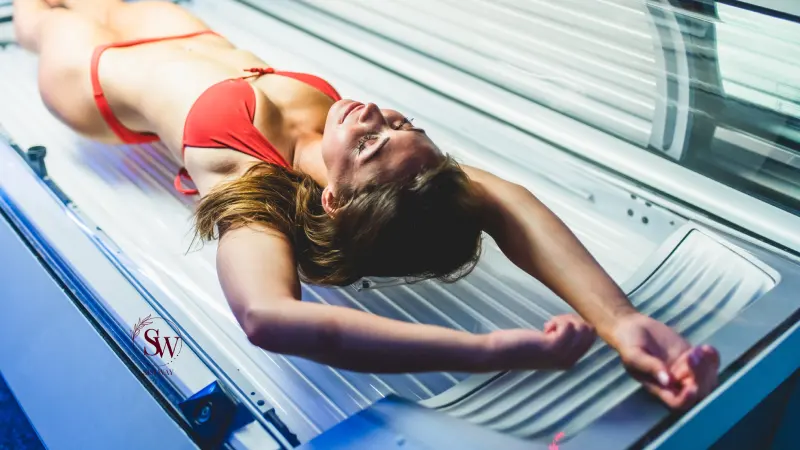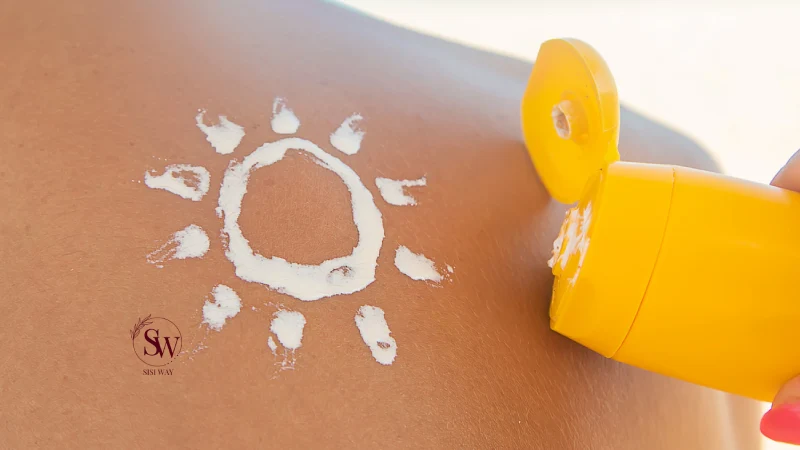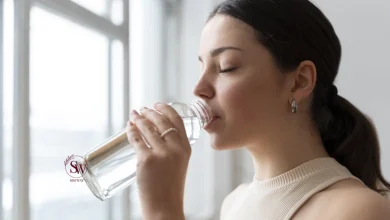Does Tanning Burn Calories?

Will Tanning Burn Calories?
Many people enjoy spending time in the sun, soaking up its warmth and achieving a golden tan. With the ongoing obsession with fitness and calorie burning, it’s natural to wonder if tanning under the sun or in a tanning bed can actually help burn calories. In this article from sisiway, we will delve into the topic and explore whether tanning can truly be considered a calorie-burning activity or if it’s just a myth. So will tanning burn calories?

The Science Behind Calorie Burning:
To understand the relationship between tanning and calorie burning, it’s important to grasp the basic principles of energy expenditure The science behind calorie burning is rooted in our body’s energy expenditure. Calories are a unit of measurement for the energy content in food, and our bodies burn calories to fuel various bodily functions and physical activities. The process of burning calories involves the conversion of stored energy into usable forms, such as ATP (adenosine triphosphate), which powers our cells. The two primary components of calorie burning are basal metabolic rate (BMR) and physical activity.
Basal metabolic rate (BMR) refers to the amount of energy expended by our bodies at rest to maintain basic functions such as breathing, circulating blood, and regulating body temperature. BMR is influenced by factors such as age, weight, height, sex, and body composition. Generally, individuals with a higher muscle mass tend to have a higher BMR as muscles require more energy to maintain.
Physical activity is another crucial factor in calorie burning. Engaging in physical activities such as walking, running, strength training, or even household chores increases the energy expenditure beyond the baseline BMR. The intensity and duration of the activity play a significant role in determining the number of calories burned. Higher intensity activities and longer durations typically result in more calories being burned.
Understanding the science behind calorie burning helps us make informed decisions about our physical activity levels and diet. By incorporating regular exercise, maintaining an active lifestyle, and focusing on a balanced diet, we can optimize our calorie burn and support our overall health and well-being. With this information, we can answer this question “Does tanning burn calories?”

Calories Burned Tanning
Tanning itself does not directly burn a significant number of calories. In fact, the answer to the question “Does tanning burn calories?” is negative .The process of tanning involves the skin’s response to ultraviolet (UV) radiation, which stimulates the production of melanin, the pigment responsible for darkening the skin. This response does not require the same level of physical exertion as activities like running or weightlifting, which are known to burn calories.
However, it’s important to note that spending time outdoors or engaging in physical activities while tanning may indirectly contribute to calorie burning. For example, if you are tanning at the beach and engaging in activities like swimming, playing beach volleyball, or taking a long walk, you will naturally burn calories through these physical activities. The calorie burn in such cases is a result of the exercise, not the tanning itself.
Additionally, exposure to sunlight has been found to affect metabolism and vitamin D synthesis, which can have indirect effects on calorie burning. Some studies suggest that sunlight exposure may increase energy expenditure by boosting metabolic processes. However, it’s important to note that these effects are relatively minor compared to the calorie burn achieved through intentional exercise.
It’s crucial to maintain a balanced approach to tanning and prioritize sun safety. Overexposure to UV radiation can lead to sunburn, skin damage, premature aging, and an increased risk of skin cancer. Therefore, it’s essential to limit sun exposure, wear sunscreen, seek shade during peak sun hours, and protect your skin with clothing and accessories, regardless of whether you are tanning or engaging in physical activities.

How Many Calories does Tanning Burn?
Tanning itself does not burn a significant number of calories. The process of tanning, whether through sun exposure or tanning beds, primarily involves the skin’s response to UV radiation, which triggers the production of melanin, the pigment responsible for darkening the skin. This process does not require a substantial amount of energy or physical exertion, so the calorie burn associated with tanning itself is minimal. And in other words, the answer to the question “Does tanning burn calories?” can be stated as negative. It means that you should not expect calorie or fat burning from this activity.
While it is challenging to provide an exact number of calories burned during tanning, it is generally considered negligible. The calorie burn associated with tanning is typically far lower compared to activities like walking, running, or engaging in exercise. To achieve noticeable calorie burn, it is more effective to focus on engaging in physical activities that elevate heart rate and increase overall energy expenditure.
Remember, the primary purpose of tanning should be to enjoy the sun or achieve a desired aesthetic, rather than as a means of burning calories. If your goal is to burn calories, it is recommended to engage in regular exercise and maintain a balanced diet to achieve optimal results.

Does Tanning Increase Metabolism
Tanning itself does not directly increase metabolism. This process primarily affects the skin and does not have a significant impact on overall metabolism.
However, exposure to sunlight, which is often associated with tanning, can have certain indirect effects on metabolism. Sunlight exposure helps the body produce vitamin D, which plays a role in various metabolic processes. Vitamin D is involved in calcium absorption, immune function, and maintaining bone health. Adequate levels of vitamin D are important for overall health, and deficiencies can have metabolic implications.
Additionally, sunlight exposure can help regulate the body’s internal clock, known as the circadian rhythm. A properly functioning circadian rhythm is essential for optimal metabolism and overall well-being.
While sunlight exposure can have some indirect effects on metabolism, it’s important to note that these effects are relatively minor compared to the impact of factors such as exercise, dietary choices, and overall lifestyle habits on metabolic rate. To effectively boost metabolism, it is recommended to focus on regular physical activity, strength training, maintaining a healthy diet, and getting enough rest and sleep.
Potential Health Risks:
While tanning itself may not burn calories, it is crucial to address the potential health risks associated with excessive exposure to UV rays. Overexposure to UV radiation can lead to sunburn, premature aging, skin damage, and an increased risk of skin cancer. It is vital to prioritize sun safety by wearing sunscreen, seeking shade during peak sun hours, and using protective clothing and accessories, such as hats and sunglasses. Moreover, by acquiring sufficient information about the rules you should know about tanning, you can reduce these risks to a significant extent.
Here are some of the potential health risks associated with tanning:
Sunburn:
Prolonged exposure to UV radiation can cause sunburn, which is characterized by red, painful, and inflamed skin. Sunburn not only damages the skin but also increases the risk of skin cancer.
Premature Aging:
Overexposure to UV radiation can accelerate the aging process of the skin, leading to premature wrinkles, age spots, and a loss of elasticity. This can result in a prematurely aged appearance over time.
Skin Damage:
UV radiation can cause damage to the DNA in skin cells, leading to potential mutations and an increased risk of skin cancer. It is essential to protect your skin from harmful UV rays to reduce the risk of developing skin cancer, including melanoma, the most deadly form of skin cancer.
Eye Damage:
UV radiation can also harm the eyes, increasing the risk of conditions such as cataracts, macular degeneration, and photokeratitis (corneal sunburn). It is important to wear UV-blocking sunglasses to protect your eyes when exposed to sunlight.
Increased Risk of Skin Cancer:
Excessive exposure to UV radiation is a major risk factor for skin cancer, including melanoma, basal cell carcinoma, and squamous cell carcinoma. These types of skin cancer can be serious and potentially life-threatening.

FAQ
- Does tanning in a tanning bed burn calories?
A1: Tanning in a tanning bed itself does not burn a significant number of calories. The process of tanning in a tanning bed primarily involves the exposure of the skin to UV radiation, which stimulates the production of melanin and causes the skin to darken. This process does not require the same level of physical exertion as activities that are known to burn calories.
- Can tanning under the sun help burn calories?
A2: Tanning under the sun does not directly burn calories. However, if you engage in physical activities while tanning, such as swimming or playing sports, those activities can contribute to calorie burning. The calorie burn in such cases is attributed to the exercise itself, not the tanning process.
- Can tanning boost metabolism and indirectly burn calories?
A3: While sunlight exposure can have some indirect effects on metabolism, the impact on calorie burning is relatively minimal. Some studies suggest that sunlight exposure may increase energy expenditure by boosting metabolic processes. However, the calorie burn associated with these effects is generally negligible compared to the calorie burn achieved through intentional exercise and physical activity.
Conclusion:
Although tanning may not directly burn calories, it is essential to maintain a balanced approach to achieving a tan while prioritizing your skin’s health. Engaging in regular physical activity and adopting a healthy lifestyle with a well-rounded exercise routine and a nutritious diet are still the most effective ways to burn calories and maintain overall well-being. Remember, sun safety should always be a top priority to protect your skin from the harmful effects of UV radiation.



